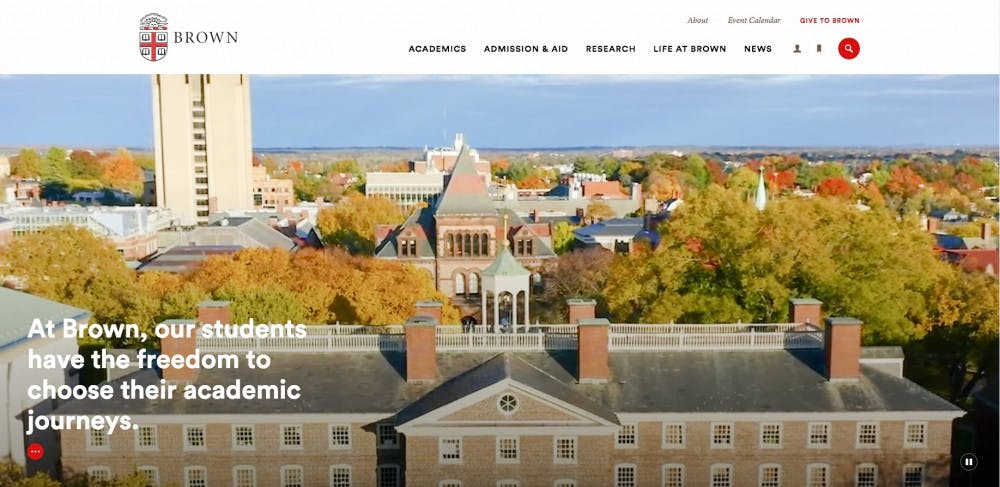The first phase of the new brown.edu website launched yesterday, featuring a new home page and over 50 more accessible and updated sites linked to the core University website.
The University decided to launch the website “because the old site needed a solid refresh,” said John Spadaro, deputy chief information officer of Computing and Information Services. Given that the website was last redone in 2010, “the new website will be a much more modern take on how people expect websites to work in 2019,” he added.
With this new launch, the University hopes to address accessibility issues that have arisen since 2010 to ensure that the entire website is compliant with federal requirements such as the accessibility standards in the Americans with Disabilities Act.
The University needs “to comply with (these standards) not just because of federal rules, but because it’s the right thing to do,” Spadaro said. “We want anyone to be able to access our website. … The world is different today than it was nine years ago in terms of expectations of being on your phone, and if you are visually impaired, those are really important elements for modern design.”
“From a CIS perspective, we need to make sure the website performs no matter where you are in the world, that it works crisply and accurately every time,” he said.
The goals for the new website also include creating an “outstanding user experience,” Vice President for Communications Cass Cliatt wrote in a community-wide announcement.
Joel Pattison, director of Web and Digital Communication Strategy is most excited about “new features that will hopefully make the website easier to navigate,” in conjunction with new digital content like “videos, photographs and student profiles.”
The website’s new digital content has already enhanced the experience of some of its users. “My first opinion is that the new website feels more mobile friendly and everything fits in the screen,” said Serene Akkawi ’19. “I like the layout of the photos and how you can swipe through the videos that automatically play.”
The rebuild project started in spring 2018. The first part of this project was “building the technical infrastructure (and) overriding design … to make the site work,” Spadaro said. This initial phase was completed with the launch of the new website.
By phasing the launch rather than relaunching the entire website at once, costs are minimized, Pattison said. “There are some costs being funded centrally by the University.”
During this initial phase, there were at least “30 individuals contributing time and effort to the relaunch each week,” Pattison said.
This launch is the result of a partnership between the Office of University Communications and CIS. OUC manages design, content, strategy and user experience, while CIS provides technological development support.
The website rebuild fits directly with the mission of the University’s Digital Transformation Initiative, which aims to enhance the University’s web presence and improve its accessibility, Spadaro said.
“This is really the starting point, not an endpoint,” Pattison said. “We are working with the Provost and executive leadership on (the other) websites.”
In the next two years, the University plans to continue rebuilding over 200 of its official websites. In rebuilding the rest of the sites, Spadaro anticipates putting content into the new brown.edu framework in an orderly fashion from website to website.
Prior to the launch, community members were warned of the potential for brief delays or disruptions that may occur with web traffic. If community members encounter persisting errors, Cliatt advised them to email web@brown.edu.





